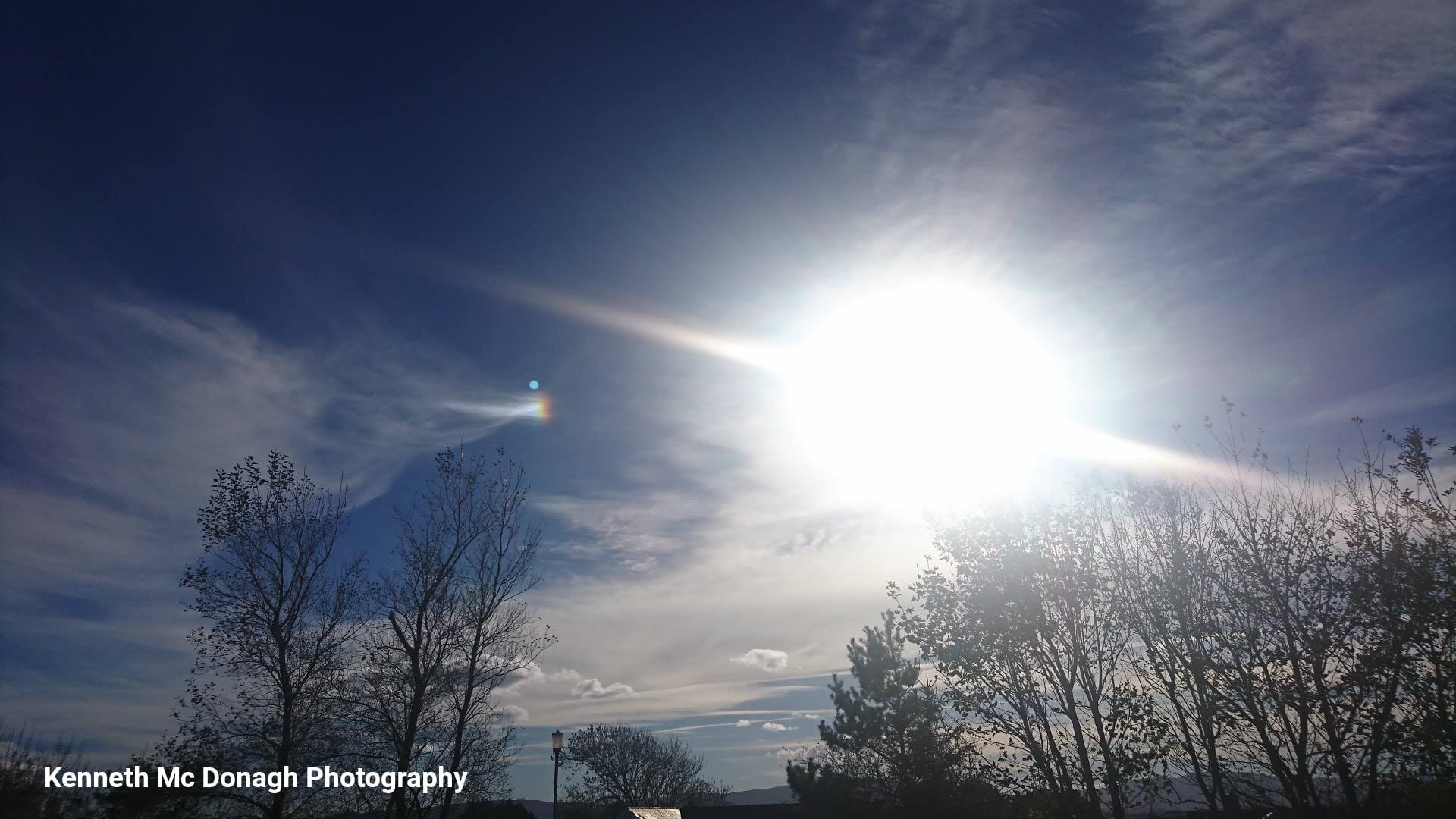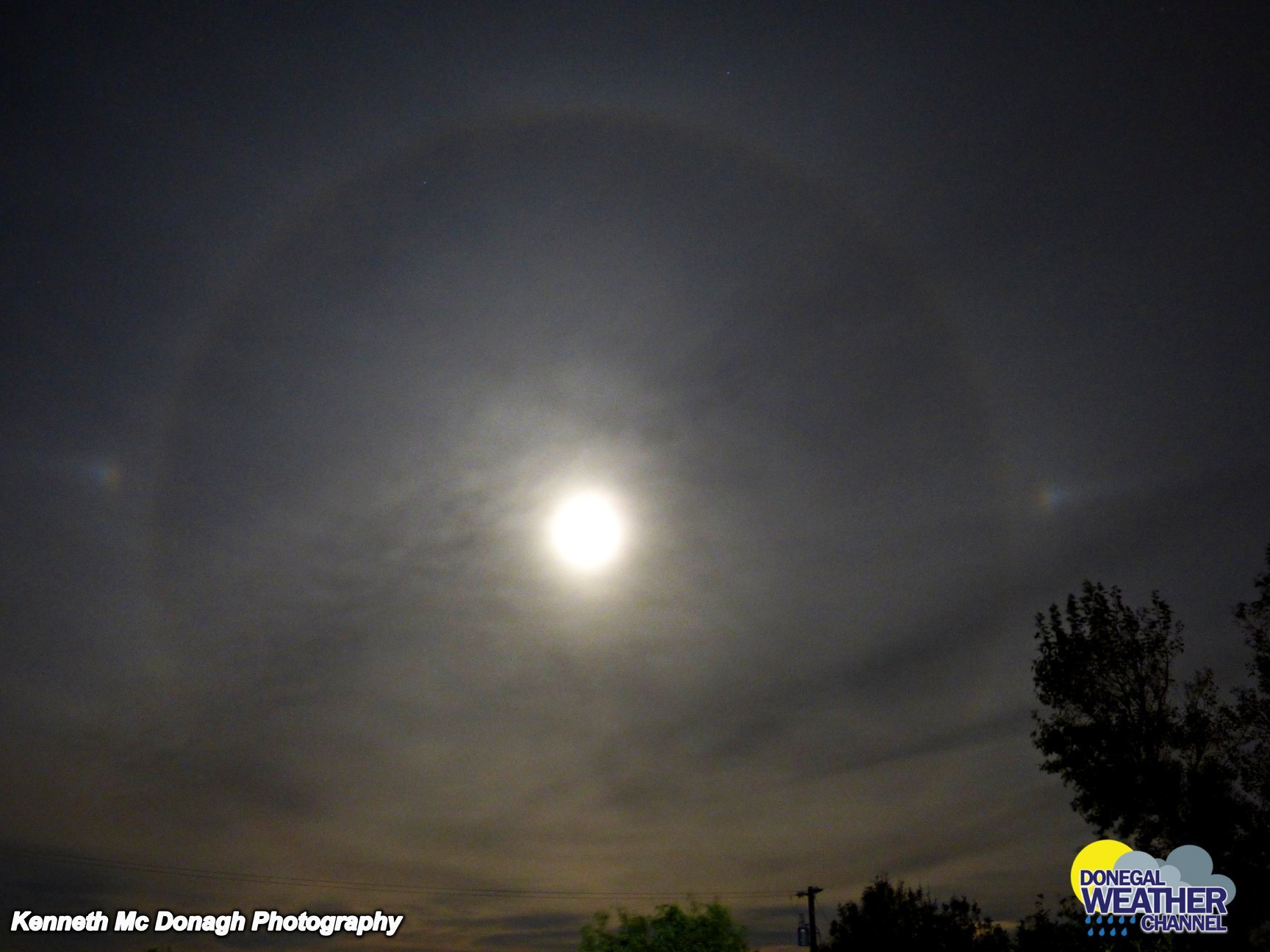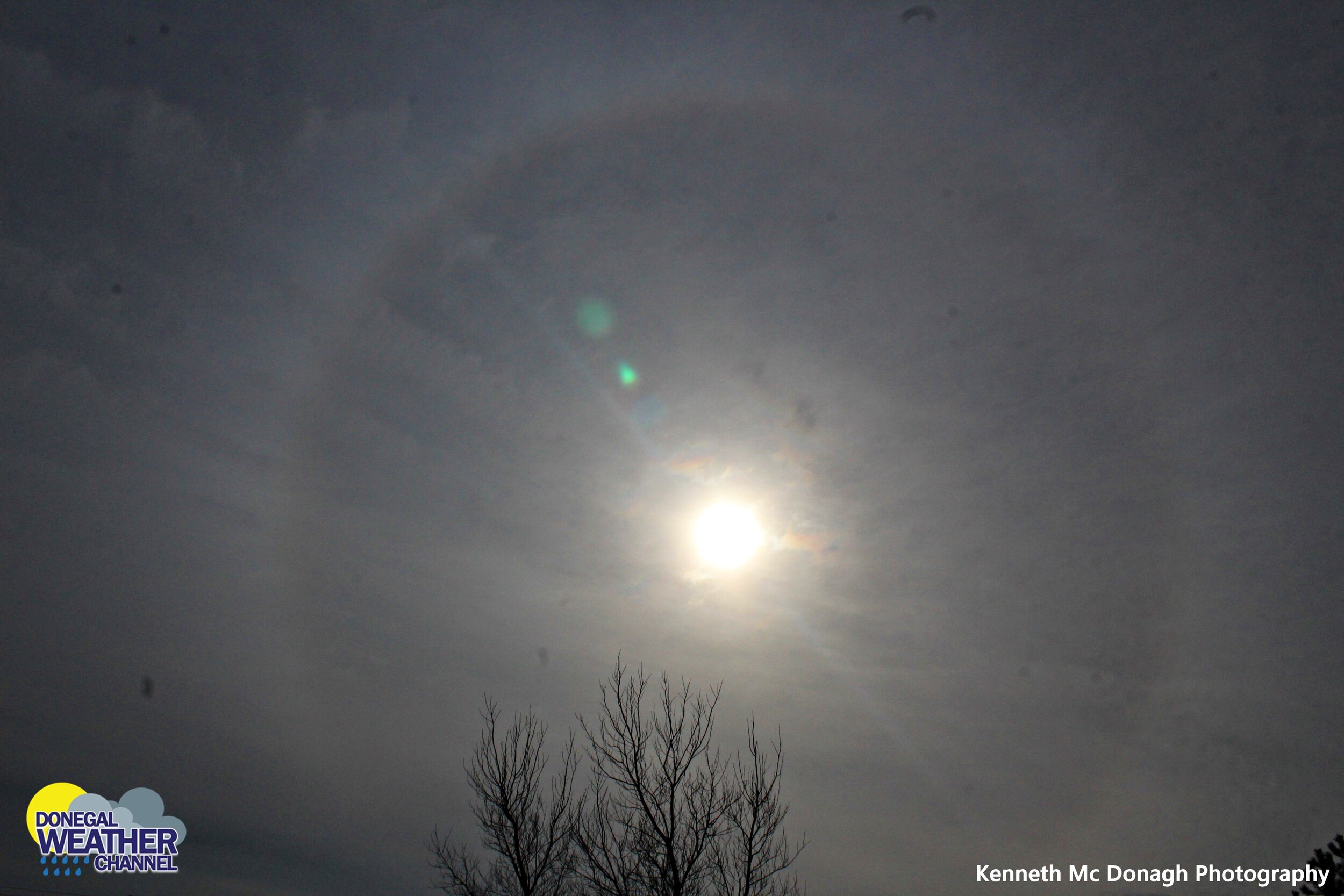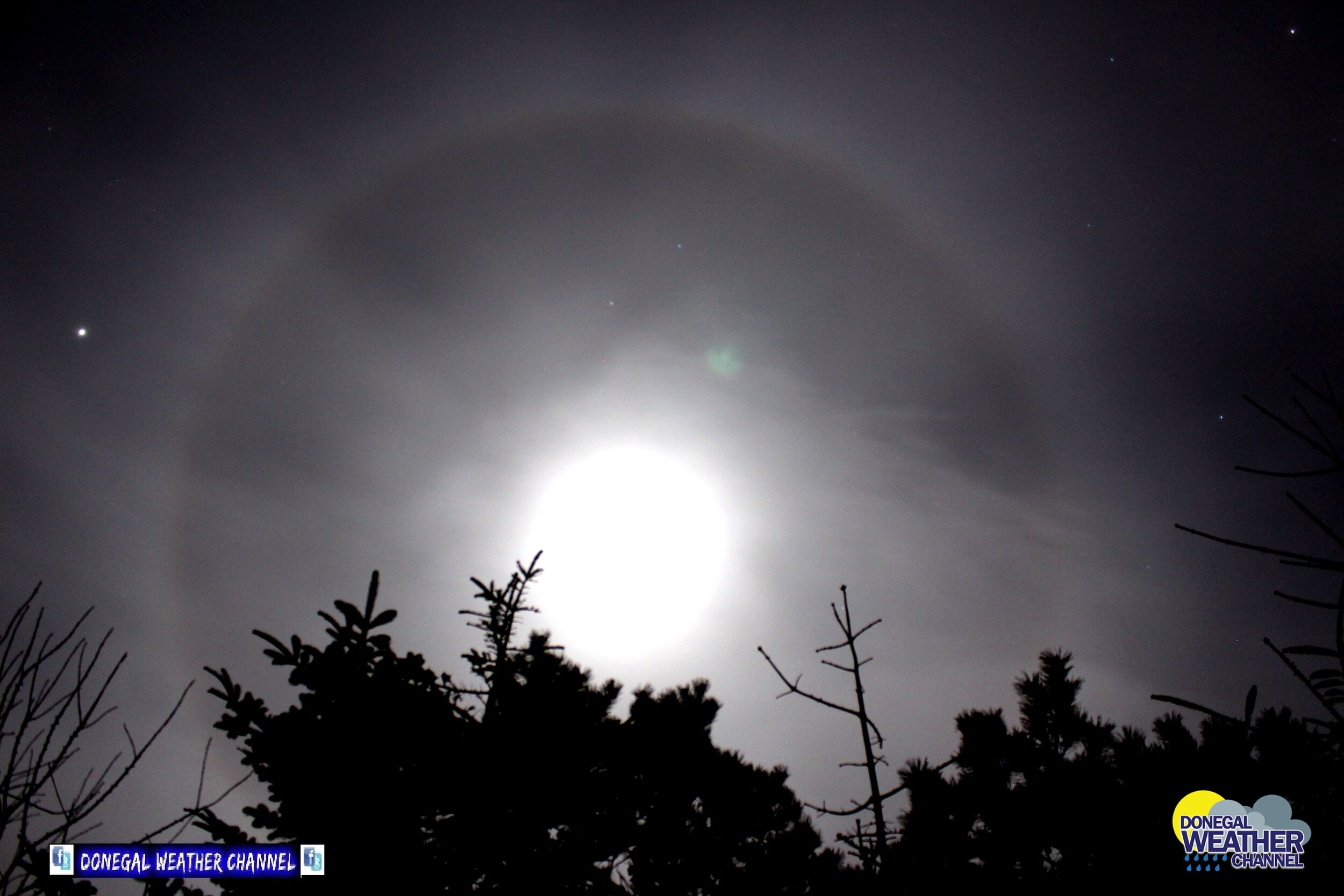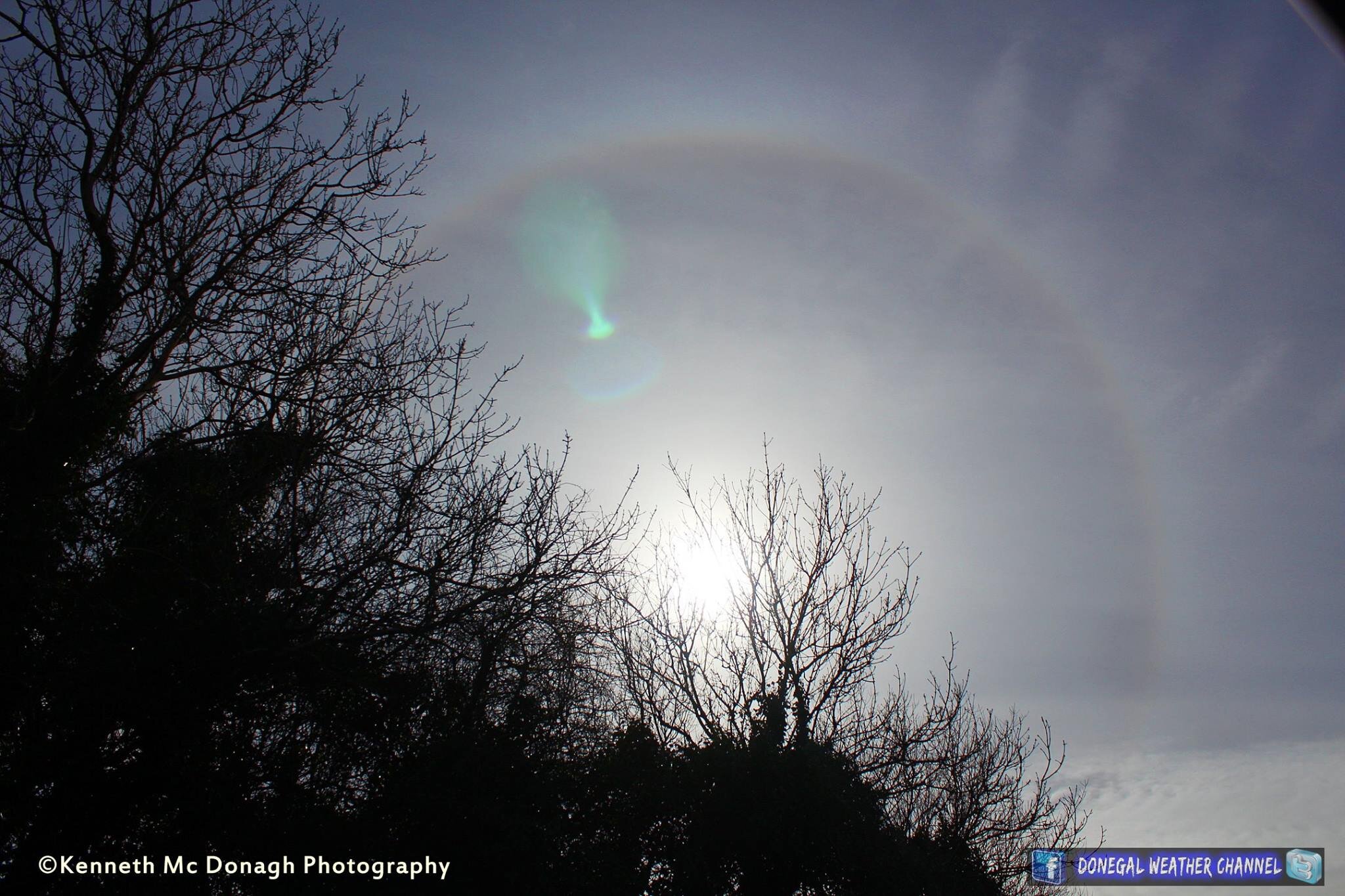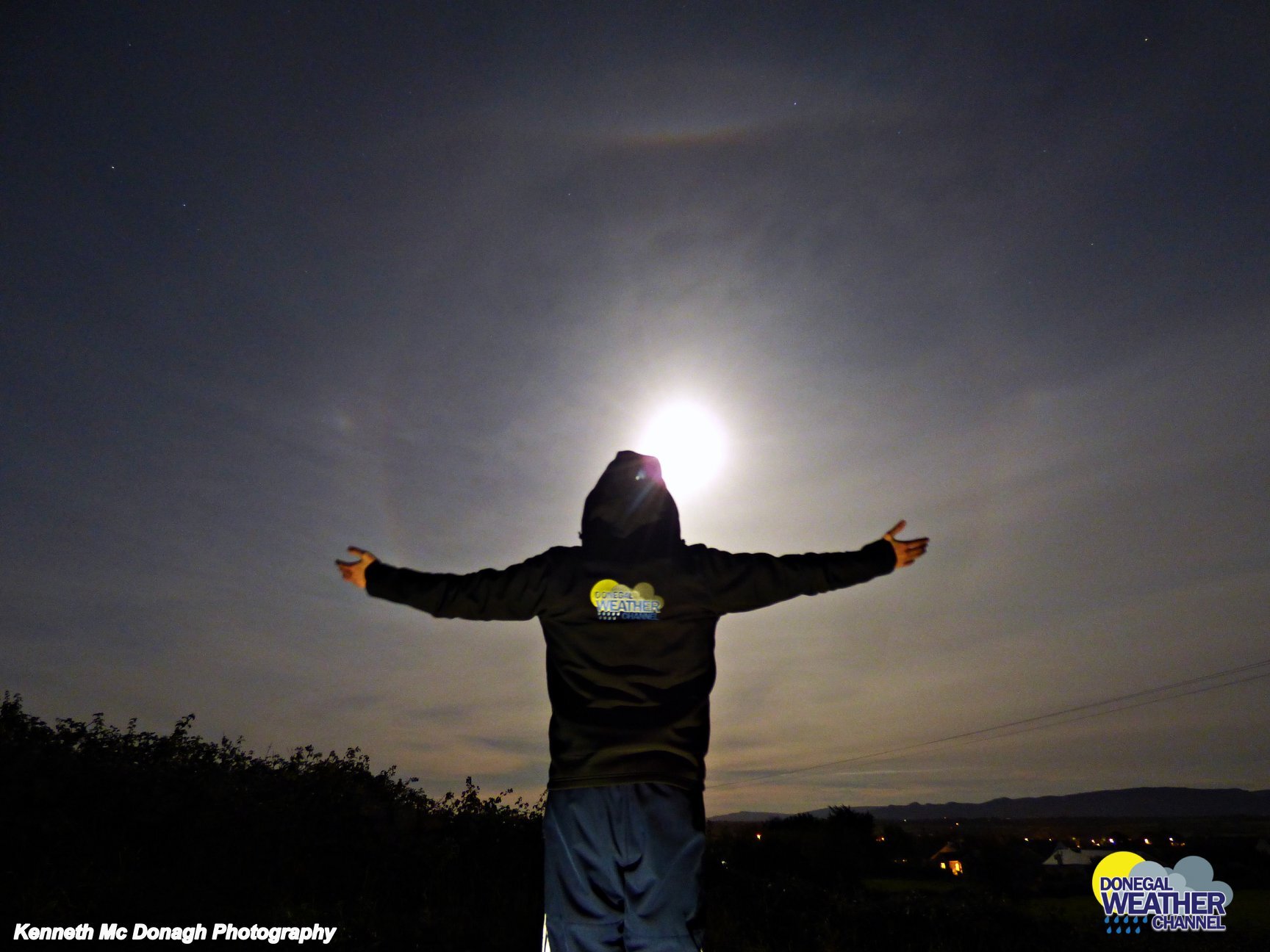LEARN ABOUT
Weather Optical Phenomena
RAINBOWS
Rainbows caused by sunlight always appear in the section of sky directly opposite the sun, but originate no further than 42 degrees above the horizon for observers on the ground. To see them at higher angles, an observer would need to be in an airplane or near a mountain top since the rainbow would otherwise be below the horizon.
The bigger the water droplets which form the rainbow, the brighter the rainbow will be.
A secondary rainbow can also form this rainbow is caused by light being reflected once in droplets of water. In a double rainbow, a second arc may be seen above and outside the primary arc, and has the order of its colours reversed (red faces inward toward the other rainbow, in both rainbows). This second rainbow is caused by light reflecting twice inside water droplets.
Rainbows appear in seven colours because water droplets break white sunlight into the seven colours of the spectrum (red, orange, yellow, green, blue, indigo & violet)
On a very rare occasions you can also get a 3rd and 4th Rainbow.
RED RAINBOW
Red rainbows happen when the sun is on the horizon. They're created for much the same reason that a sunset or sunrise looks red. When the sun is low, its blue and green light is weakened by scattering during the long journey to your eyes through Earth's atmosphere. The red light travels through more directly
Moonbow
The moon is the key, just as sunlight produces rainbows during the day, moonlight can produce rainbows at night. This is a lunar rainbow or 'moonbow'. Because the light is usually too faint to excite the cone colour receptors in human eyes, it is difficult for the human eye to discern colours in a moonbow. As a result, a moonbow often appears to be white. However, the colours in a moonbow do appear in long exposure photographs.
Fogbow
A fog bow, sometimes called a white rainbow, is a similar phenomenon to a rainbow; however, as its name suggests, it appears as a bow in fog rather than rain. Because of the very small size of water droplets that cause fog—smaller than 0.05 millimeters (0.0020 in)—the fog bow has only very weak colours, with a red outer edge and bluish inner edge
Sundog / Moondog
A sun dog or mock sun, formally called a parhelion in meteorology, is an atmospheric optical phenomenon that consists of a bright spot to the left and/or right of the Sun. Two sun dogs often flank the Sun within a 22° halo. Moon dogs can be defined as a very rare but bright spots that can be seen around the moon. The moon dogs are normally caused by the refraction of moonlight, which is caused by ice crystals in cirrus clouds and these ice crystals are usually shaped in a hexagonal plate form.
Circumhorizontal arc
A circumhorizontal arc, also known as a fire rainbow, is an optical phenomenon that belongs to the family of ice halos formed by the refraction of sun- or moonlight in plate-shaped ice crystals suspended in the atmosphere, typically in cirrus or cirrostratus clouds.
Image by Noel Keating Photography
Brocken spectre
A Brocken spectre also called Brocken bow or mountain spectre, is a enormous and magnified shadow of an observer, cast upon the surfaces of clouds opposite the sun
Solar glory and Spectre of the Brocken
Cloud iridescence
Cloud iridescence is the occurrence of colours in a cloud similar to those seen in oil films on puddles, located in the general vicinity of the sun or moon. It is a fairly common phenomenon, most often observed in altocumulus, cirrocumulus, lenticular clouds and cirrus clouds..
Glory
Glory is an optical phenomenon consisting of a series of concentric coloured rings about the anti solar point visible against the background of a cloud, fog bank or mist. ... Glories are caused by diffraction in which the droplets act as a point-source reflectors.
Green flash at sunrise/sunset
Green flashes and green rays are optical phenomena that sometimes occur just after sunset or right before sunrise. When the conditions are right, a green spot is visible above the upper rim of the Sun's disk. The green appearance usually lasts for no more than a second or two. Rarely, the green flash can resemble a green ray shooting up from the sunset (or sunrise) point. Green flashes occur because the atmosphere can cause the light from the sun to separate out into different colours.
Image by Noel Keating Photography
Blue flash at sunset
The blue flash during sunset is a relatively uncommon phenomenon and rare. It appears just before the last rays of the Sun slip beneath an unobstructed horizon where both the bending, or refraction, of light and mirage effects (multiple or inverted images) are greatest.
Image by Noel Keating Photography
Earth shadow
Earth shadow is the shadow that Earth itself casts onto its atmosphere and into outer space, toward the anti solar point. During twilight (both early dusk and late dawn), the shadow's visible fringe (sometimes called the dark segmentor twilight wedge) appears in a clear sky as a dark and diffused band low above the horizon.
Sylvanshine
Sylvanshine is an optical phenomenon in which dew-covered foliage with wax-coated leaves retroreflect beams of light, as from a vehicle's headlights. This effect sometimes makes trees appear snow-covered at night during the summer.
Halos lunar and solar
These clouds, being so high in the sky, are made from ice crystals. The properties of the ice crystals reflect and refract light in such a way as to cause a ring around the sun. Since high clouds typically proceed unsettled weather, it is said a halo around the sun or moon means rain or snow is on the way. The ice crystals responsible for halos are typically suspended in cirrus or cirrostratus clouds high (5–10 km, or 3–6 miles) in the upper troposphere, but in cold weather they can also float near the ground, in which case they are referred to as diamond dust.
There are many different types of halo such as the is Double Halo which was Captured by Noel Keating in Donegal back on the 14th of July 2016. This photo Noel captured was reviewed by atmosphericoptics expert Les Cowley. "There are actually three halos in this picture," says atmospheric optics expert Les Cowley. "The familiar 22 degree halo is the inner circle around the sun. Touching it at top and bottom is an outer oval, a circumscribed halo."
"The large circle crossing the sun, and hanging below it, is an unusual appearance of the parhelic circle. We normally see only fragments of the parhelic circle closer to the horizon. Here the sun is high and it has shrunk to a small circle around the zenith."
Image by Noel Keating Photography
Crepuscular rays
Crepuscular (more commonly known as sunbeams, sun rays, or god rays), in atmospheric optics, are rays of sunlight that appear to radiate from the point in the sky where the sun is located. These are called crepuscular rays, and are caused by clouds blocking the sunlight, their long shadows cast on haze and other particulates floating in our air. ... The fanning out of the rays is actually an illusion, caused by perspective!
Heiligenschein or Holy Light
Heiligenschein is an optical phenomenon in which a bright spot appears around the shadow of the viewer's head. In photogrammetry and remote sensing, it is more commonly known as the hotspot.
Image by Noel Keating Photography
Sun pillar
A sun pillar is a vertical shaft of light extending upward or downward from the sun. Typically seen during sunrise or sunset, sun pillars form when sunlight reflects off the surfaces of falling ice crystals associated with thin, high-level clouds (like cirrostratus clouds).






